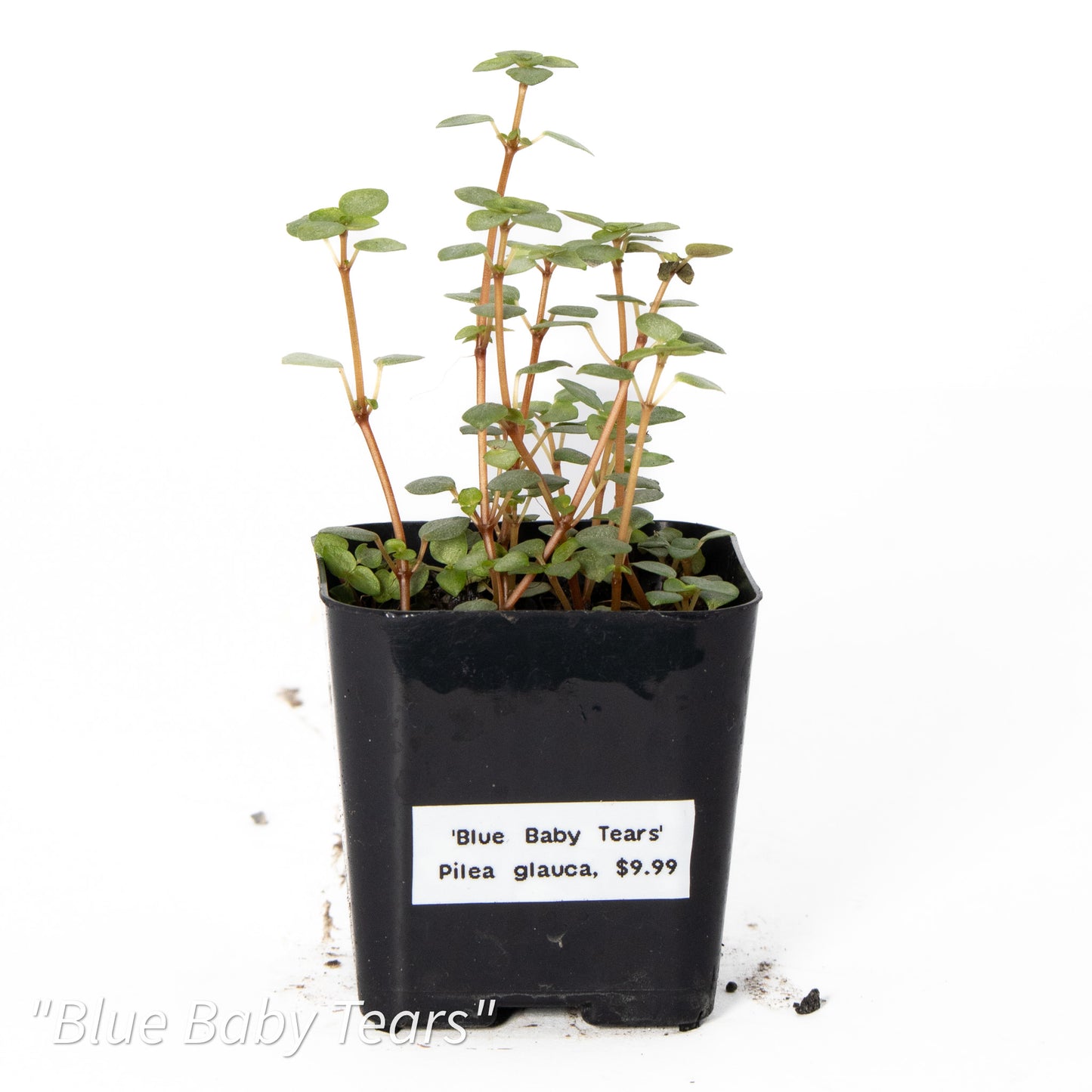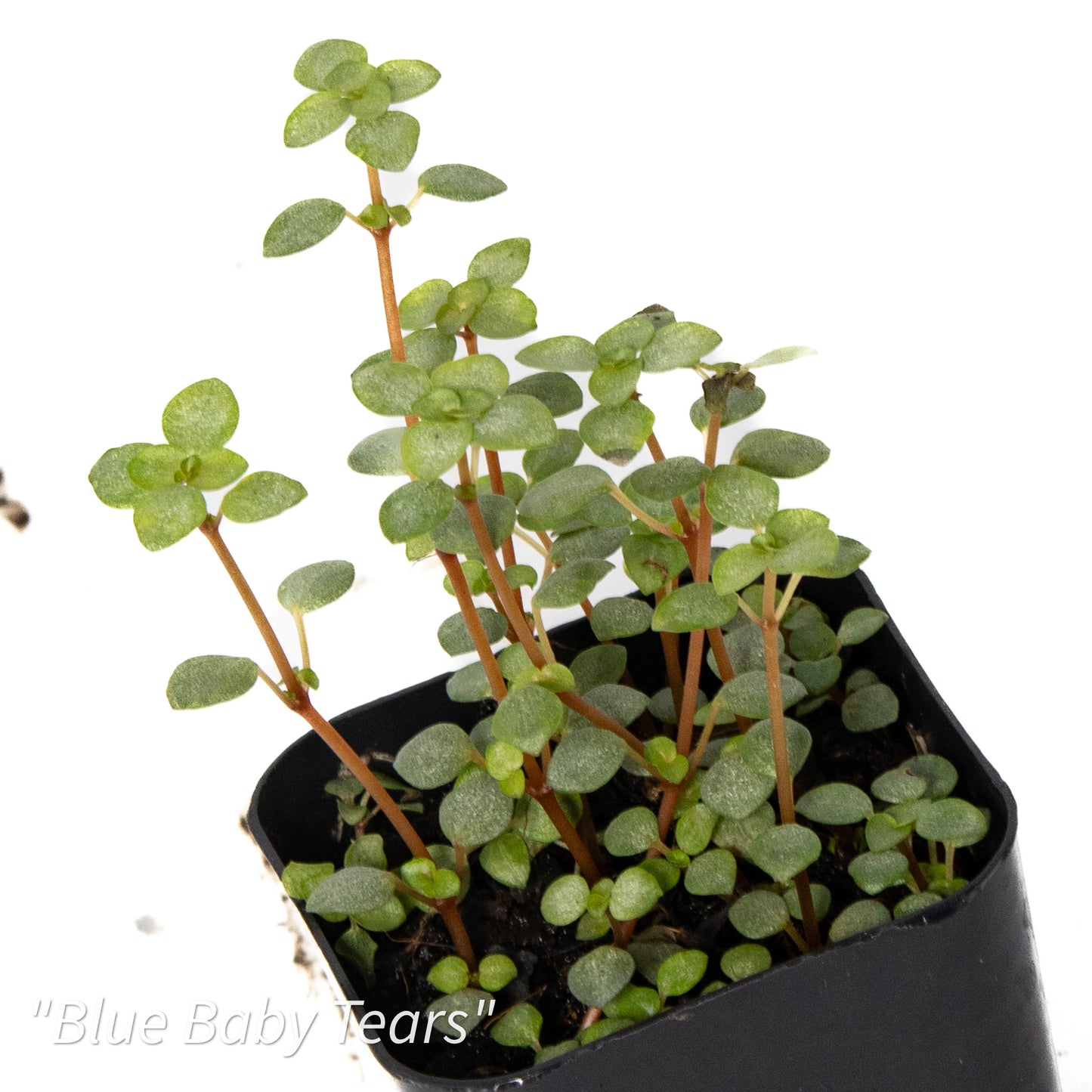Royal Python's Cove
Pilea glauca ‘Blue Baby Tears’
Pilea glauca ‘Blue Baby Tears’
Couldn't load pickup availability
Pilea glauca ‘Blue Baby Tears’ is a delicate, low-growing plant with tiny, round, and soft leaves that create a beautiful, dense carpet of foliage. Known for its unique blue-green hue, this compact plant adds a soft, serene aesthetic to any bioactive setup. Its fast-growing, spreading nature makes it ideal for use as ground cover in terrariums, vivariums, and paludariums, where it can help maintain humidity while adding an element of natural beauty to your ecosystem.
Care Instructions
LIGHT. Prefers bright, indirect light but can tolerate moderate light. Too much direct sunlight can cause the leaves to scorch, so it’s best to place it in an area with filtered light. In bioactive setups, position it near a light source while avoiding direct sun exposure.
SOIL. Thrives in a well-draining, organic-rich soil mix. A blend of coconut coir, perlite, and sphagnum moss mimics its natural environment, providing both good moisture retention and adequate aeration. This soil also creates a suitable habitat for decomposers like isopods and springtails.
WATERING. Prefers consistent moisture, but it’s important not to let it sit in standing water. Allow the top layer of soil to dry out slightly between waterings. Overwatering can lead to root rot, while underwatering may cause the plant to lose its lushness and result in leaf wilting.
HUMIDITY. Enjoys high humidity (above 60%) and is well-suited to bioactive environments. If the humidity is too low, the leaves may become crispy and dry. To maintain high humidity, consider misting regularly, keeping a moist substrate, or adding a water dish.
TEMPERATURE. Prefers warm temperatures between 65°F and 80°F (18°C to 27°C). Avoid exposure to cold drafts or temperatures below 55°F (13°C), as the plant may experience stress or slowed growth.
FERTILIZATION. Feed with a balanced liquid fertilizer every 4-6 weeks during the growing season (spring and summer). In bioactive setups, organic fertilizers such as Mealworm Frass can provide slow-release nutrients to keep the plant healthy. Reduce fertilization in winter when growth naturally slows.
Cohabitation with Bioactive Organisms
ISOPODS. These decomposers help break down plant matter and organic waste, enriching the substrate with nutrients and preventing soil compaction. They create a more aerated environment that supports healthy root growth for the plant.
SPRINGTAILS. Thriving in moist, organic-rich environments, springtails help control mold, fungus, and other decaying matter. Their presence also supports a clean and balanced ecosystem in bioactive enclosures.
Soil and Maintenance Tips
SUBSTRATE. A light, airy substrate made of coconut coir, perlite, and sphagnum moss is ideal for Pilea glauca. This ensures that the soil remains well-drained yet retains enough moisture for the plant's needs. A layer of activated charcoal at the bottom can help with odor control and filtration in bioactive setups.
HUMIDITY CONTROL. To maintain optimal humidity, use a shallow water dish, misting the area, or employing a humidifying system in the enclosure. The plant’s health will improve when springtails and isopods help manage the moisture balance.
TRIMMING. While the plant’s low-growing habit naturally forms a dense carpet, you can trim back the plant if it becomes too leggy or spreads beyond your desired area. Regular trimming will promote fuller growth. Cuttings are easy to propagate in water or soil.
PEST CONTROL. Pilea glauca ‘Blue Baby Tears’ is naturally pest-resistant. However, in bioactive environments, springtails and isopods help manage any potential pests, such as aphids or mealybugs, by feeding on their larvae or eggs, helping to keep the plant healthy.
With its delicate leaves and vigorous growth, Pilea glauca ‘Blue Baby Tears’ is an excellent addition to bioactive enclosures, offering ground cover while enhancing humidity levels. It thrives in moist, organic-rich environments and adds a soft, blue-green touch to terrariums or vivariums. By maintaining proper light, moisture, and substrate, you’ll ensure a healthy, lush carpet of foliage that enhances both the plant's growth and the ecosystem of your enclosure.
Share




